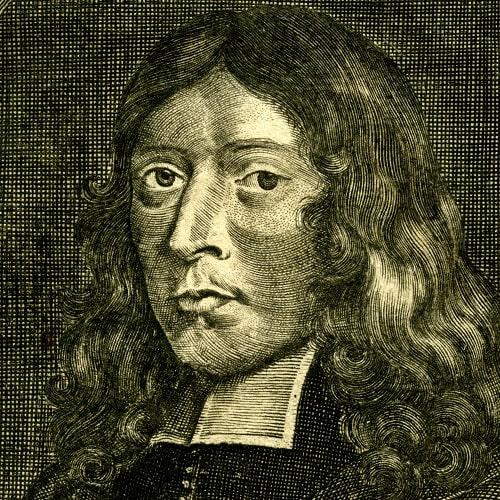Richard Lower, MD, was born at Tremere, near Bodmin, Cornwall, about the year 1631, and educated at Westminster school, whence he was elected in 1649 a student of Christ church, Oxford. As a member of that house he proceeded AB 17th February, 1652-3, AM 28th June, 1655, and then, under the able guidance of Dr Thomas Willis, devoted himself to the study of medicine, assisting his master in his numerous dissections of the brain and nerves, preparatory to the great work on that subject which he was then meditating.(1) For the anatomical as distinguished from the physiological and speculative parts of Willis’s treatise, “de Cerebro,” and they are in fact the only portions of the work that are now of any value, it has always been understood that we are indebted to Lower.
Lower proceeded doctor of medicine, accumulating his degrees 26th June, 1665, then practised his faculty at Oxford, and in the same year published a defence of Dr Willis’s work on fevers –
Diatribæ Thomæ Willisii, MD et Prof Oxon. De Febribus Vindicatio, adversus Edm. de Meara Ormondiensem Hibern. MD. 8vo.
This was followed, in 1669, by his Tractatus de Corde, item de Motu et Calore Sanguinis et Chyli in eum transitu. This work, the most complete that has appeared on the subject, attracted much notice, in consequence of the chapter on transfusion of blood, which the author had practised at Oxford in 1665, and subsequently on an insane person before the Royal Society, of which body he was admitted a fellow 17th October, 1667. About this time Lower removed to London, probably at the instigation of his friend and patron Dr Willis, then in very full business. He was admitted a Candidate of the College of Physicians 22nd December, 1671, and a Fellow 29th July, 1675.
He settled first in Hatton-garden, then removed to Salisbury-court, Fleet-street, went thence to Bow-street, and finally fixed himself in King-street, Covent-garden. Dr Lower soon got into very good practice, and on the death of Dr Willis, in 1675, was (as we are told by Wood,) esteemed “the most noted physician in Westminster and London, and no man’s name was more cried up at court than his.” He is believed to have been the type of physician who takes part in the dialogue of Henry Neville’s “Plato Redivivus,” as one who relieved his abstruser studies by conversations in politics.
On the breaking out of the so-called Popish plot in 1678, Dr Lower espoused the Whig cause, believing that it must henceforward be predominant. In this supposition, however, he was mistaken, and he lost most of his practice about the court, and suffered considerably in reputation. Dr Lower died at his house in King-street, Covent-garden, 17th January, 1690-1, of a cold contracted in extinguishing a fire which had broken out in his chamber chimney. His body was carried to Cornwall and interred in the church of St Tudy, near Bodmin, in which parish he had purchased an estate some years previously.
By his Will he gave 1,000l to St Bartholomew’s hospital; 500l to the French Protestant Refugees; 500l to the Irish Protestant Refugees; 50l to the poor of the parish of St Paul’s, Covent-garden; and 40l to the poor of the two parishes in Cornwall where he had land.
In addition to the two works above named, Dr Lower published -
Dissertatio de Origine Catarrhi et de Venæsectione. 8vo. Lond. 1672.
William Munk
[(1) Willis’s obligations to Lower were great, and he thus handsomely acknowledges them in his preface: “At vero huic operi accuratius perficiendo, cum mihi nec otii, ac forsan, e proprio marte, non virium satis suppeteret auxiliaries aliorum manus accessere non erubescebam. Atque medici hic imprimis doctissimi et anatomices summe periti DOMINI RICHARDI LOWER, ope ac socia usus sum opera; cujus sane et cultelli et ingenii aciem mihi in corporum prius abditorum tum fabrica, tum muniis melius indagandis, emolumento fuisse lubens agnosco. Quare hoc comite et coadjutore ascito, nulla fere dies sine administratione quadam anatomica transibit; ita ut, brevi temporis spatio de cerebro, ejusque intra cranium, appendice, nihil non plane detectum et nobis intime perspectum videretur. Posthæc cum pensum longe difficilius - scilicet aggrederemur; tunc plurimum emicuit viri hujus solertia plane admiranda nec non indefatigabilis industria, nulloque obice sistendus labor: nervi enim cujusque, utat minuti, ac intra alia corpora immersi ac varie impliciti, divaricationes omnes quaquaversus oberrantes, exactissima indagine prosequutus, adeoque ramorum et propaginum cujusque paris longe lateque diffusorum labyrintos evolvens; eorundem uti et multorum sanguiductuum schemata, sive iconas, cujusmodi in hoc tractatu prostant ichnographicas, propria manu exaravit, quae quidem ut sine falsi crimine aut erroris labe fideles prorsus ac emendatissimæ prodierint, id egit, ut vix ullam tabula contineat lineolam aut levissimum ductum cujus conformatio et exacta habitudo non plurium animalium, eam ob causam mactatorum, indiciis comprobata fuerint.”]

